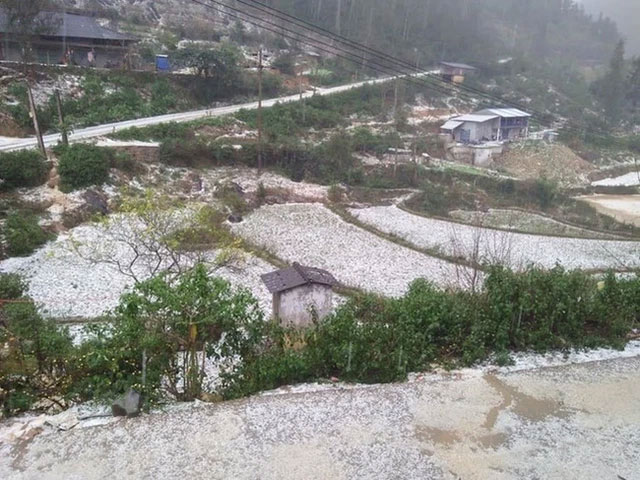According to information from the National Center for Hydro-Meteorological Forecasting, starting from January 26 (24th of the last lunar month), a low-pressure area will enter the East Sea, accompanied by a cold air mass that will affect the weather in various provinces of our country in the days leading up to the Lunar New Year.
As reported by the National Hydro-Meteorological Forecasting Center, around the night of January 28-29 (26-27th of the last lunar month), the northern provinces are likely to be affected by a strong Northeast monsoon combined with a western wind trough.
Due to the influence of the cold air, the Northern and North Central regions will experience thunderstorms, with potential occurrences of whirlwinds, lightning, hail, and strong gusts; subsequently, the cold air will continuously strengthen and intensify.
From January 29 (the 27th of the last lunar month), the Northern region and Thanh Hoa will experience severe cold, lasting throughout the Lunar New Year, with the high mountainous areas likely to see snow and frost when temperatures drop to very low levels.

In 2021, our country experienced unusual hail on the first day of Tet.
Additionally, around January 26-27, a low-pressure area over the southern waters of the Philippines will move into the eastern waters of the South China Sea and may strengthen into a tropical depression.
To proactively respond, mitigate consequences, and minimize damage, as well as to prepare for potential thunderstorms, hail during the Tet holiday in 2022, similar to the situation during Tet Canh Ty 2020 and the low-pressure area potentially entering the East Sea, the National Steering Committee for Disaster Prevention and Control Office recommends:
The northern provinces and cities should closely monitor weather warnings, forecasts, and disaster alerts to promptly inform and guide local authorities and the public to proactively prevent severe cold, frost, heavy rain accompanied by whirlwinds, lightning, hail, and strong winds that may occur in the coming days.
<pLocal provinces and cities should direct and organize inspections and reviews of response plans suited to local conditions, especially preparing equipment and materials (tarpaulins, various roofing sheets), and mobilizing local forces to assist residents in quickly and effectively recovering from damages to ensure a safe Tet holiday; proactively implementing safety measures for people, crops, and livestock, particularly in high mountainous areas where temperatures may drop significantly; proactively informing and guiding visitors and tourists; and placing warning signs on routes that may experience frost and slippery conditions to ensure safety for road users.
Local authorities should direct specialized agencies to coordinate with provincial television stations and media outlets, especially at the grassroots level, to enhance activities promoting and guiding residents on skills to cope with severe cold, frost, thunderstorms with whirlwinds, lightning, hail, and strong winds, such as reinforcing roofs made of easily damaged materials (plastic, tiles); protecting household items, vegetables, crops, and livestock according to specific local conditions to minimize damage (Reference materials have been published on the website: phongchongthientai.mard.gov.vn/Pages/Tai-lieu-truyen-thong-pctt.aspx).
At sea, coastal localities from Quang Ninh to Kien Giang need to closely monitor warning and forecast bulletins as well as the developments of the low-pressure area and northeast winds; inform ship captains and vessel owners operating at sea to proactively prevent and plan production accordingly, ensuring safety for people and property; maintain communication to promptly handle any adverse situations that may arise.
The aforementioned units should organize a permanent task force to monitor the developments of natural disasters, damages, and compile reports to the Steering Committee Office (via Viber message system number: 0828.008.558; email: [email protected]; phone: 024.37335694).
Health experts advise that low temperatures can adversely affect health. People need to know how to keep warm and prevent cold for themselves and their families.
When temperatures drop below 10 degrees Celsius, the elderly and children are at risk of diseases such as bronchial asthma, chronic obstructive pulmonary disease, bronchiectasis, hypertension, cerebrovascular accidents, and joint diseases… If not treated promptly, this can lead to pneumonia, respiratory failure, stroke, and can be life-threatening.


















































